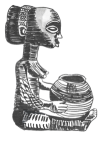Schema markup, or structured data, is code that helps search engines better understand and categorize web pages. Off-page SEO focuses on optimizing signals that occur outside your website, such as building backlinks and establishing a social media presence. On the other hand, on-page SEO involves optimizing elements directly on your webpages, like content, meta tags, and internal links. Using relevant images provides context, communicates information in a user-friendly way, and breaks up large bodies of text.
Gaining market share in the real estate space can also be difficult, making on-page SEO important to reaching your goals. Using in-depth keyword research, we can create content strategies in the real estate space SEO Anomaly that help you stand out and become a thought leader in your market. This includes elements that affect the optimization and proper operation of the website, such as site speed, mobile-friendliness, crawlability, and more. If you focus on building a ton of links but have no quality content, then you can’t expect others to link back to you. Internal linking also helps readers to find and discover other pieces of content and different pages on your website. According to Backlinko’s analysis of 5.2 million websites, webmasters can improve a site’s loading speed by moving to a faster host.
- With each new page creation, you can expect quality, user-focused, well-optimized, and search engine-friendly content.
- It’s essential to optimise them properly to maximise your rankings.
- You have more characters to work with than a title tag, which you should use to elaborate on what the page is about.
- The meta description is the little blurb beneath your title tags that appears in the search results.
- For example, instead of only targeting “running shoes”, you can add variations of this keyword such as “best running shoes”, “nike running shoes”, “shoes for women”, etc.
In that case, answer FAQs common questions, create listicles, and code them as part of your schema markups to get a featured snippet on Google. I use the AIOSEO Free Headline Analyzer to create optimized and catchy blog headlines. It gives an overall score to the headline based on the word balance, headline type and other ranking features. Conduct keyword research using SEOBoost’s Topic Reports to identify relevant keywords. For each heading, recognize what your audience is searching for.
Additionally, you’ll identify your competitors’ weaknesses to surpass them. Reviewing your website’s current performance is essential if you want to set clear goals and expectations from the upcoming updates. This should be the starting point of the whole optimization process.
Make Sure Your Site Is Mobile-Friendly
Google uses them to understand what your page is about to better match the intent behind a given search query. Search intent is arguably the most important factor for on-page SEO. After all, providing searchers with relevant and useful information is what search engines need to do every second. Off-page SEO embodies any efforts implemented outside of a website to improve its search engine rankings. It’s currently in beta, but the new AI Content Grader in Ahrefs finds “missing” subtopics.
Your title should be concise yet descriptive, giving both users and search engines a clear understanding of what the page is about. On Page SEO encompasses all measures taken directly within your website to improve its position in search rankings. This includes optimizing your content, the HTML source code of a page, and the site’s overall user experience and performance. Optimized product imagery can also drive website traffic to your online store.
Write or update your content
Use headers, short paragraphs, and bullet points to make your content easy to scan and understand. A compelling meta description can significantly increase your click-through rate (CTR). Also, the search engine results page (SERP) is dominated by informational articles. Which means most searchers are looking to learn more about flowers—not make a purchase. The keyword “blue flowers” might seem like a great keyword to target.
You can use the plugin to create a short bio and have an “author box” appear at the bottom of articles. You’ll select your areas of experience or expertise, and these will display on your author box. So, catering to how people read on digital screens is essential for online success. Your slug plays a minor role in helping Google understand the main topic of your page. Before or after you upload the image to WordPress, you can change the filename to something descriptive.
Specifically, I published an ultimate guide to mobile optimization. But sometimes you’re better off with content that’s completely different. If you see sites with a high number of common keywords, then you can consider them your competitors. The “Common Keywords” section is useful as it shows you the total number of keywords you share with each site. Their tool makes the process super easy and can save you a lot of time. So if you wanted to cover that topic on your site, you’d want to note that the first page results are made up mostly of list posts.
